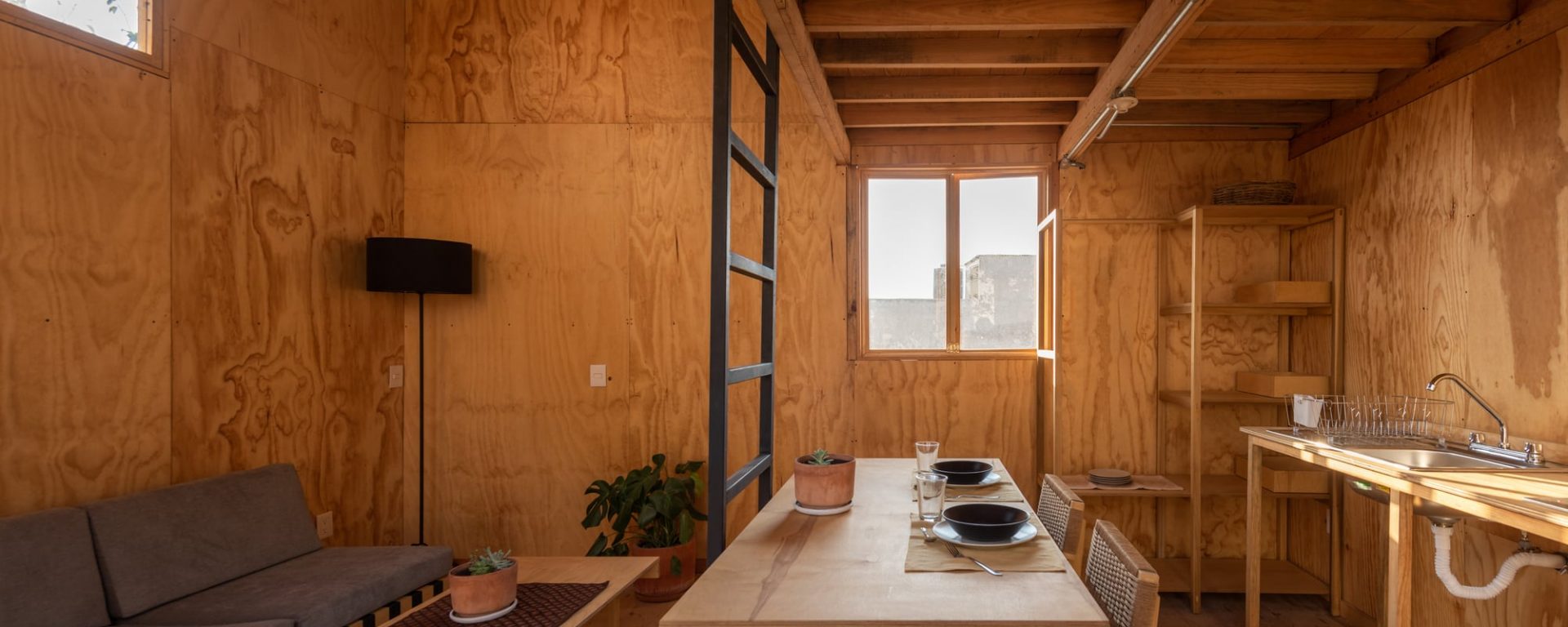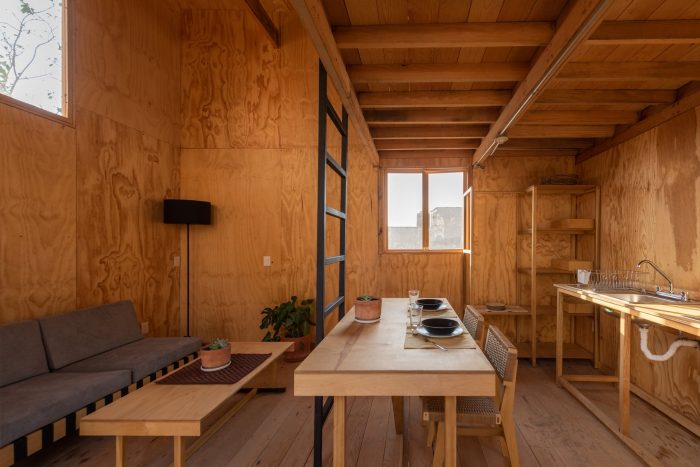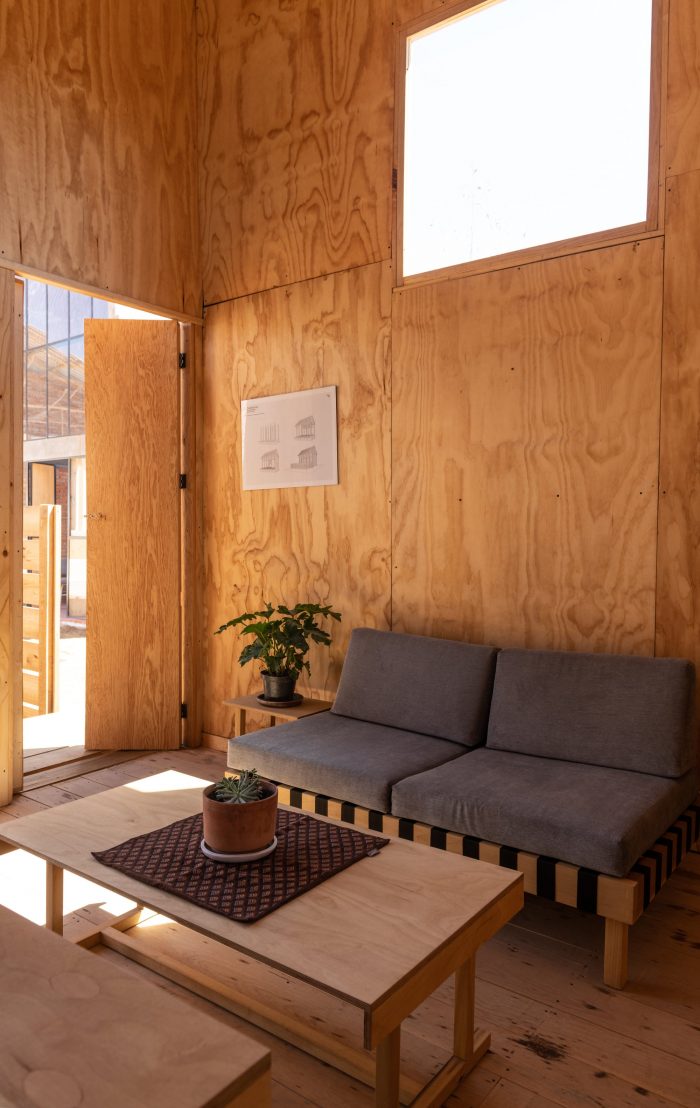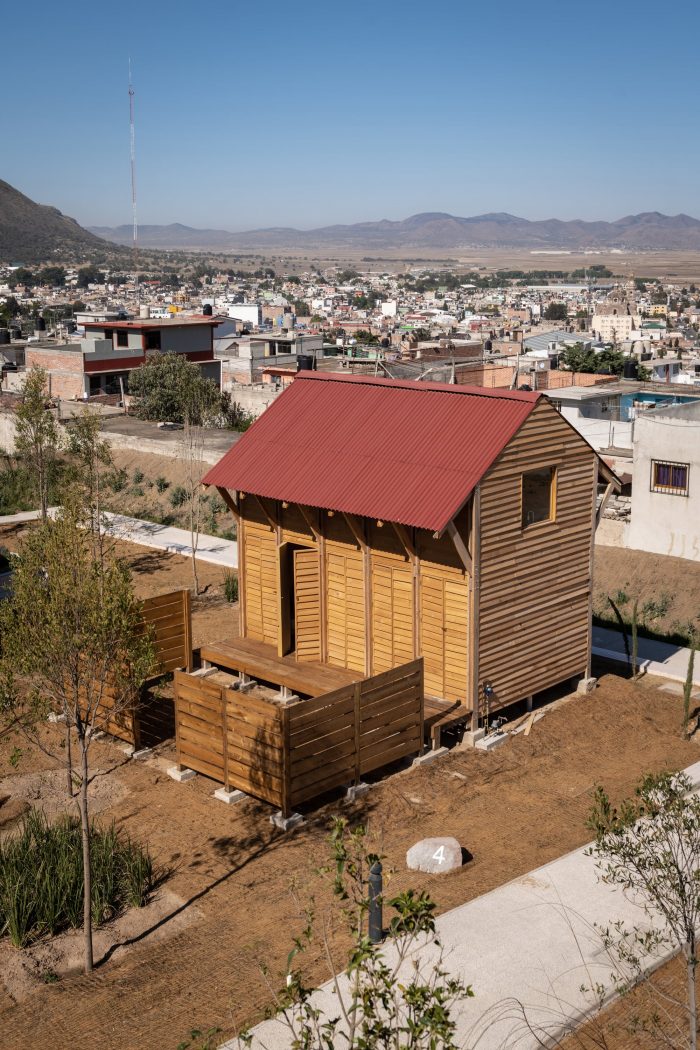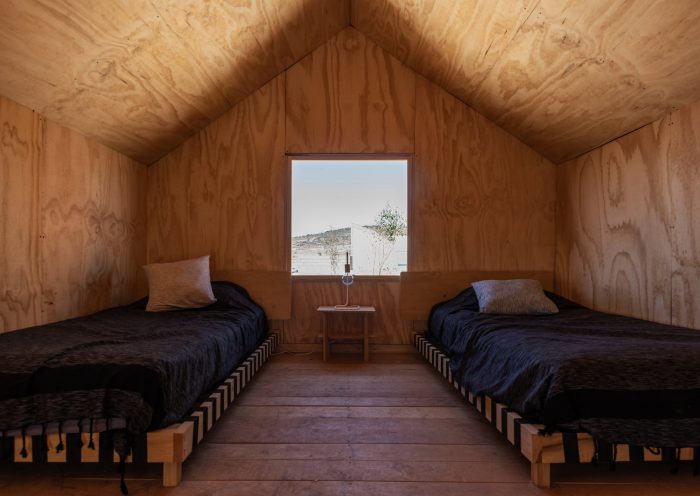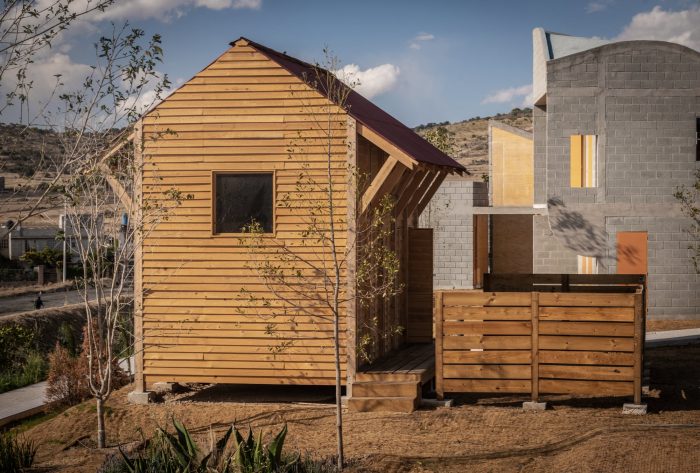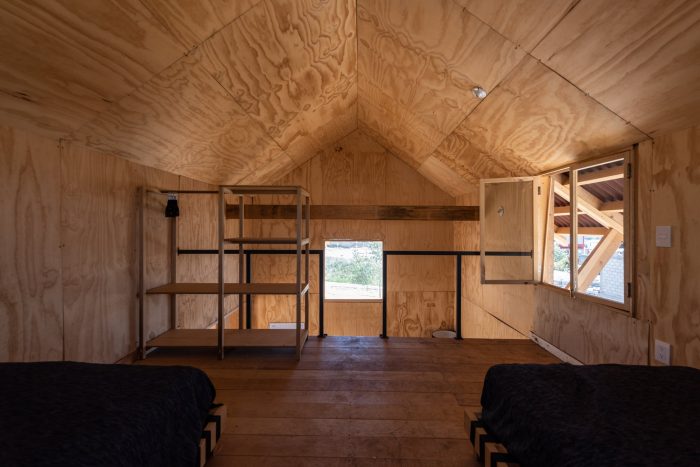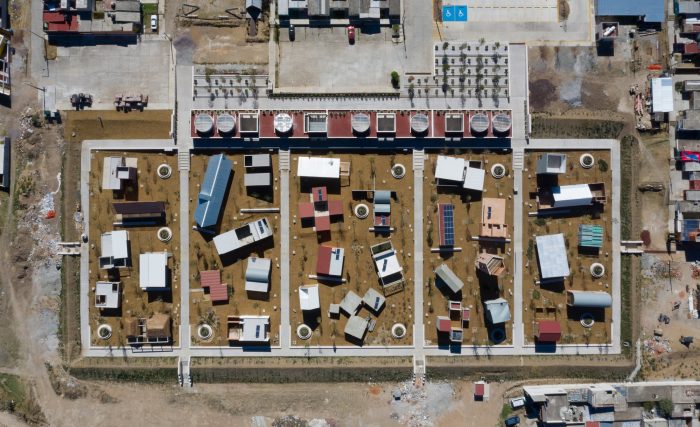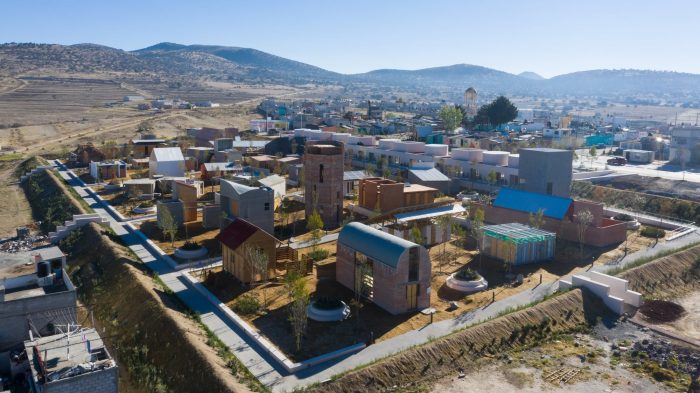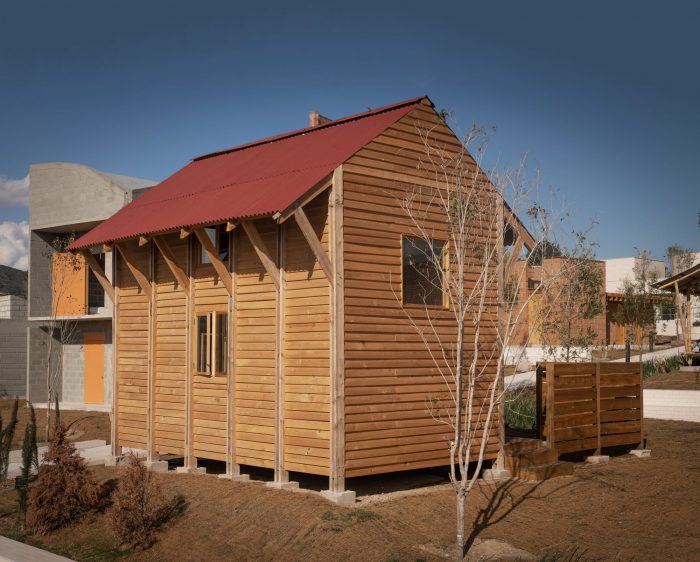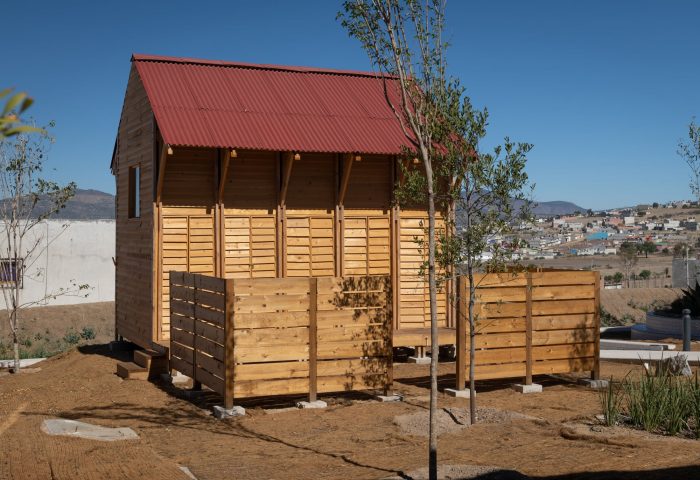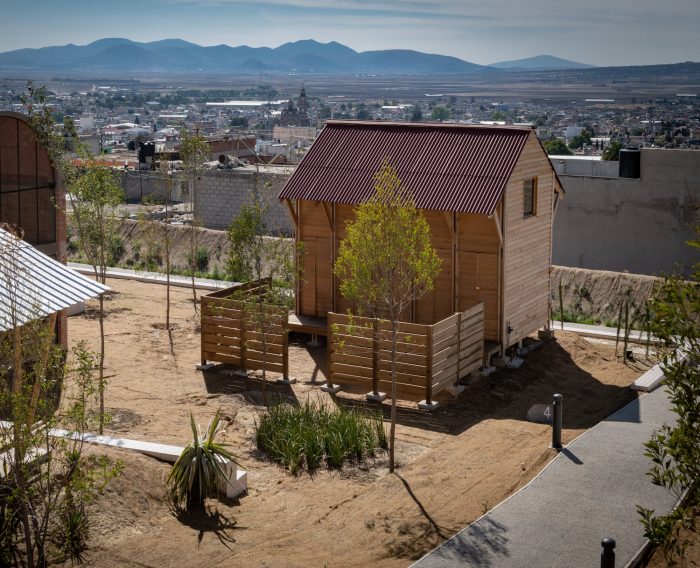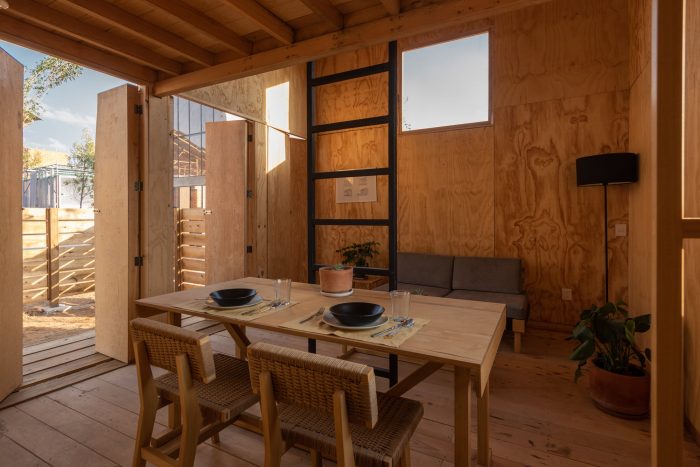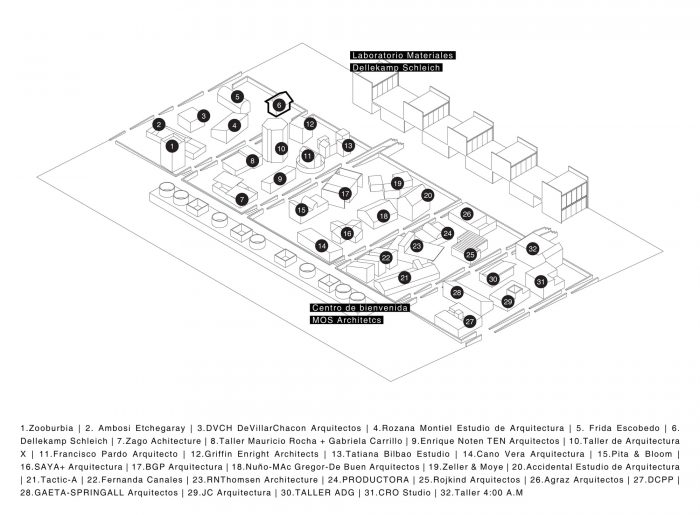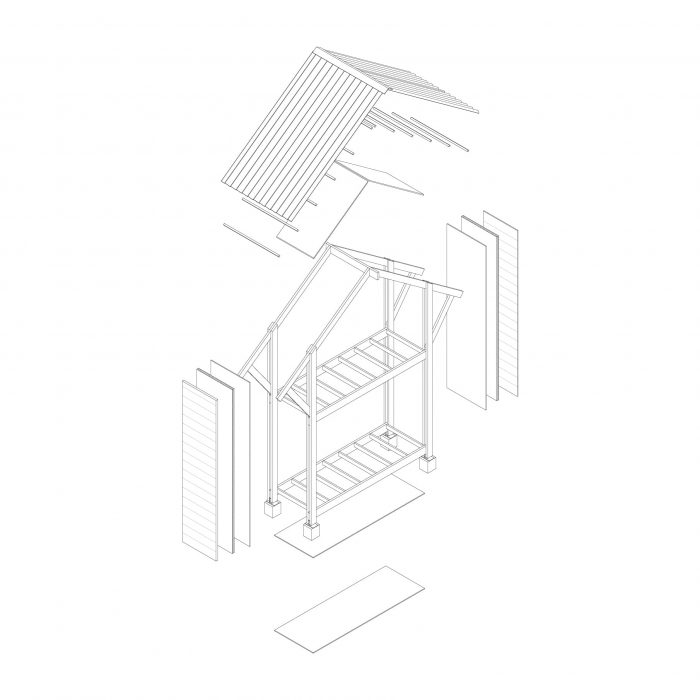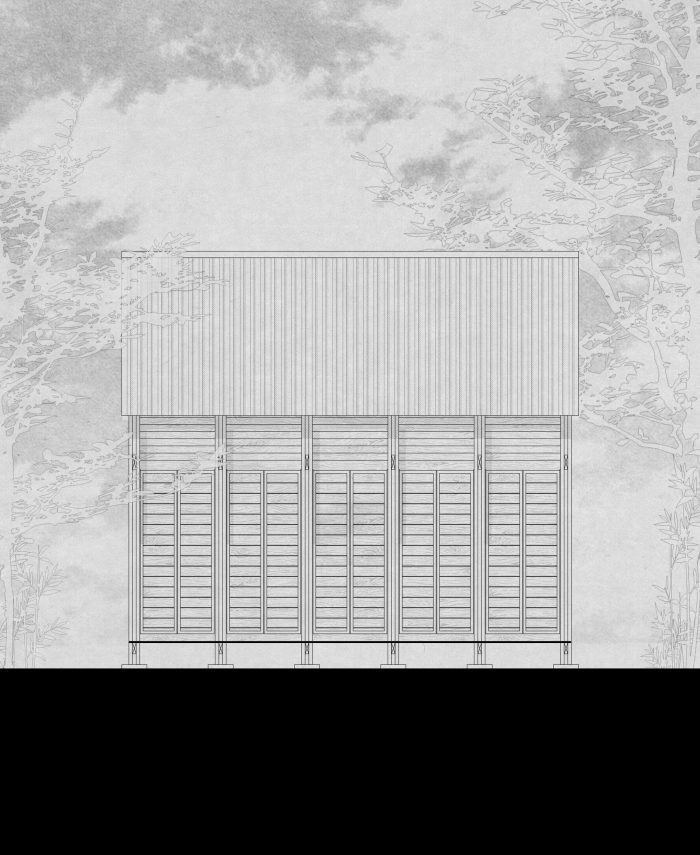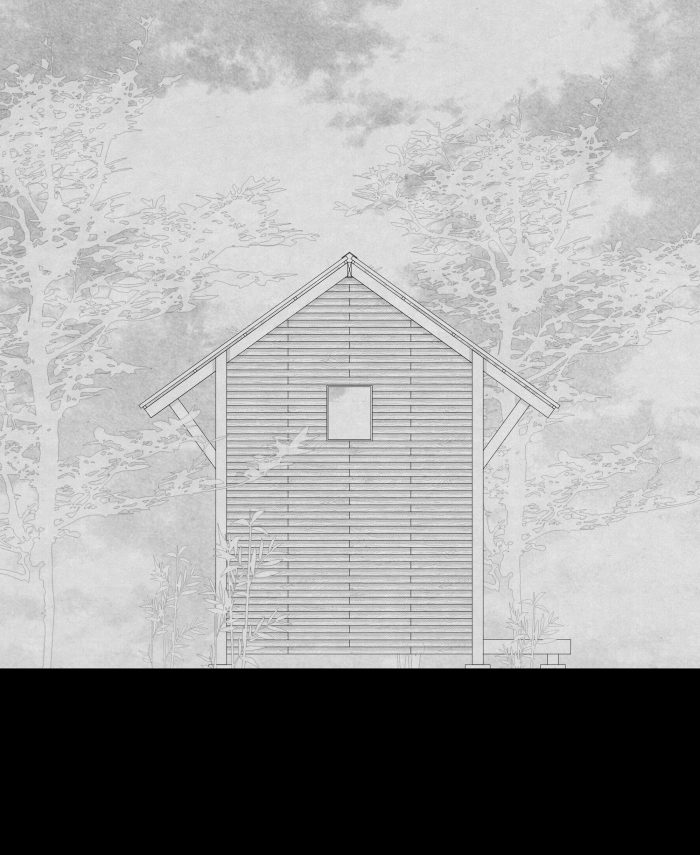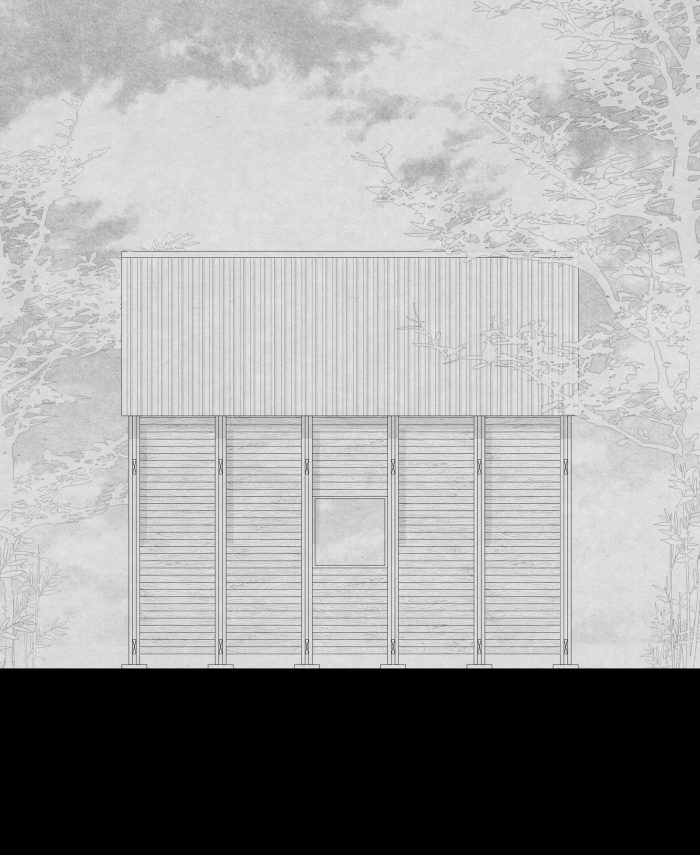该项目是构成 “从领土到居住者”(Del Territorio al Habitante)计划的84个农村住房和辅助自我生产的实验性建议之一,由CIDS(可持续发展研究中心)邀请的不同建筑事务所设计,以反映该国农村地区的住房问题。这个项目促使在特拉斯卡拉的阿潘建立了一个住房实验室,在那里建造了32个住房原型,目的是研究社会住房及其与地区的关系,作为规划和开发解决方案的基础。
The project is one of the 84 experimental proposals for rural housing and assisted self-production that make up the “Del Territorio al Habitante” (“From the Territory to the Dweller”) program, designed by different architectural offices invited by the CIDS (Center for Research for Sustainable Development) in order to reflect on housing in rural areas of the country. This program motivated the creation of a Housing Laboratory in Apan, Tlaxcala, where 32 housing prototypes were built with the purpose of studying social housing and its relationship with the region as a base for planning and developing solutions.
这些原型是MOS建筑事务所设计的总体规划的一部分,包括一个材料实验室(Dellekamp Schleich)和一个欢迎中心(MOS建筑事务所)。位于米却肯州Nuevo Parangaricutiro的地点是由 “从领土到居住者 “分配给我们的。该提案是基于对该地点的占用/解释的习惯和城市中不同规模的空间建设的空间功能分析。这个想法不是为了定义住房原型,而是可复制的过程和程序,因为每个项目都必须适应该地点和居住者的具体条件。
The prototypes are part of a Master Plan designed by MOS Architects that includes a Materials Laboratory (Dellekamp Schleich) and a Welcoming Center (MOS Architects). The location in Nuevo Parangaricutiro, Michoacán, was assigned to us by “From the Territory to the Dweller”. The proposal is based on a space-functional analysis of the habits of the site in terms of occupation/interpretation and the spatial constructions of different scales in the city. The idea was not to define housing prototypes, but rather replicable processes and procedures since each project must adapt to the specific conditions of the location and those who inhabit it.
通过采用乡土建筑的基本和熟悉的原则的木结构模块化系统(该市的经济支柱之一),拟议的住房单元提供了适应不同方案和环境的可能性。依靠两种现成的当地资源,即松木和上述的乡土建筑方法,这个项目的主要元素是它允许增长,并且它以非常简单的方式组装,以便于自我建造。
Through a modular system of wood construction (one of the economic pillars of the municipality) that adopts the basic and familiar principles of vernacular architecture, the proposed housing unit offers the possibility of adapting to different programmatic and contextual situations. Relying on two local resources readily available, pine wood and the methods of vernacular construction mentioned above, the main element of this project is that it allows growth and that it is assembled in a very simple way in order to allow self-construction.
Architects: Dellekamp Schleich
Area : 52 m²
Year : 2019
Project Team : Adrien Baillon , Diego Gahu, Gustavo Hernández, Mariana Víquez, Valentina Sánchez
Development Of Project : Centro de investigación para el Desarrollo Sostenible CIDS | Instituto Nacional de la Vivienda para los Trabajadores INFONAVIT
Structural Engineer : Óscar Trejo
Installations : Ubaldo Velázquez
Real Estate : Esrawe
Project Leader : Francisco Franco
Country : Mexico

